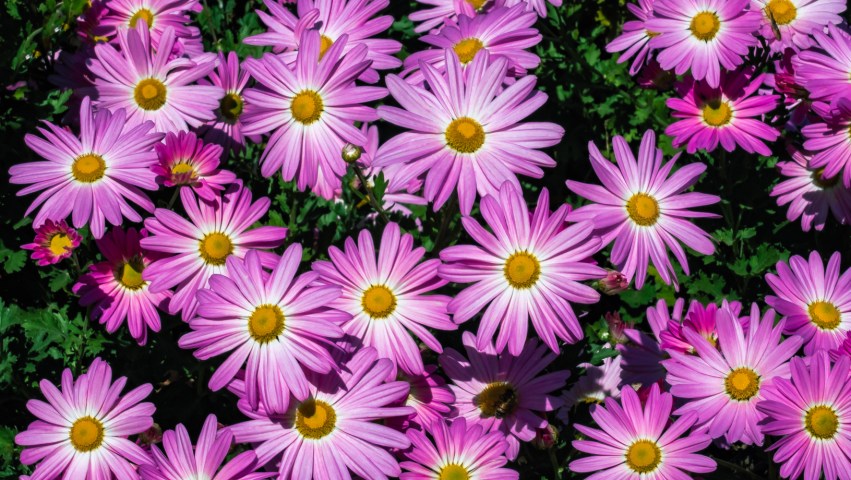From “Gaillardia (Blanket Flower)” in The English Flower Garden by William Robinson:
“Gaillardia (Blanket Flower): Handsome perennial and biennial herbs including some of the showiest flowers, valuable for their long duration both on the plants and in a cut state. The genus numbers some half a dozen across, the ray florets having an outer zone of orange-yellow and an inner one of brownish-red, while the centre is deep bluish-purple. It is the commonest kind, and having been raised largely from seed, has many varieties, differing more or less widely from the type, with various names….
“G. picta somewhat resembles G. aristata, but has smaller flowers, and is a biennial. It is dwarfer, and its flowers are brighter. G. amblyodon is a beautiful Texan annual, introduced a few years ago. Its flowers are even smaller than those of G. picta, and are of a deep cinnabar red.
“Gaillardias in many soils soon exhaust themselves by their flowering, and should be renewed periodically from seed, the seedlings being most vigorous and free…. All thrive in good friable garden soil, but not on a cold stiff soil or on one that is too light or dry. Where possible they should be grown in bold groups, for they thrive better if so placed than as solitary plants in a parched border, and no plants have a finer effect in a bed by themselves….”
From “Gaillardia” in Flowers and Their Histories by Alice M. Coats:
“The gaillardias, in spite of their French name (after M. Gaillard de Marentonneau, a patron of botany), are natives of North America, whence we have received so many yellow-rayed composites — Coreopses, Heleniums, Rudbeckias, Heliopses, Sunflowers and Goldenrods — that we might be justified in believing that continent to be paved with gold. The gaillardias, however, mix their gold with blood, and Willa Cather speaks of Nebraskan pastures where one of the species ‘matted over the ground with the deep velvety red that is in Bokhara carpets‘….
“The three kinds most usually met with in gardens are the red and yellow G. pulcella (syn. G. bicolor, 1787), perennial although usually treated as an annual, and parent of many garden varieties; the perennial yellow G. aristata, sent by [David] Douglas from the Rocky Mountains about 1826; and G. amblyodon, a red annual from Texas and New Mexico, collected by [Ferdinand] Lindheimer in 1844 and again by [Thomas] Drummond the following year. The name of Blanket Flower was probably given to G. pulcella on account of its grey woolly leaves; but the flower might very well recall the gay colours and zig-zag patterns of the Indian blankets of its native land, and one of the garden varieties is aptly named Indian Chief….”
From “Another Autumn” in How Far Light Must Travel: Poems by Judi K. Beach:
Now another autumn holds what warmth it can
for as long as possible, as I want to hold onto him
to keep winter away. Last night the hard frost
picked the last delphinium, and the final pair
of gaillardia probably will not respond
to the warm breath of day. Every garden row
is raised in a brown silhouette. Today
orange blazes everywhere….
Hello!
On the same trip to Oakland Cemetery’s gardens where I discovered the Cosmos flowers that I wrote about previously (see Discovering Cosmos), I also found another plant that I had never seen before. The red and yellow-tipped flowers below are Gaillardia variants; most likely, I think, Gaillardia pulchella — which is known by several other common names (including “Blanket Flower”), but my favorite is the very descriptive name “Firewheel.”
From the book excerpts at the top of this post, you can learn a little about the characteristics of this plant, its history, and its distribution. When I was processing these photos in Lightroom, I originally thought the blue highlights that you can see in some of the flowers’ centers were artifacts, possibly even a reflection off the blue coat I was wearing, so I removed the blue color. Then I saw the description from The English Flower Garden — “the centre is deep bluish-purple” — and I put the blue highlights back!
Thanks for taking a look!

















































































